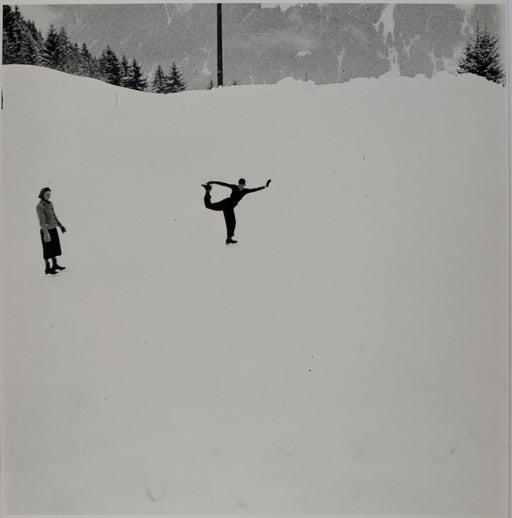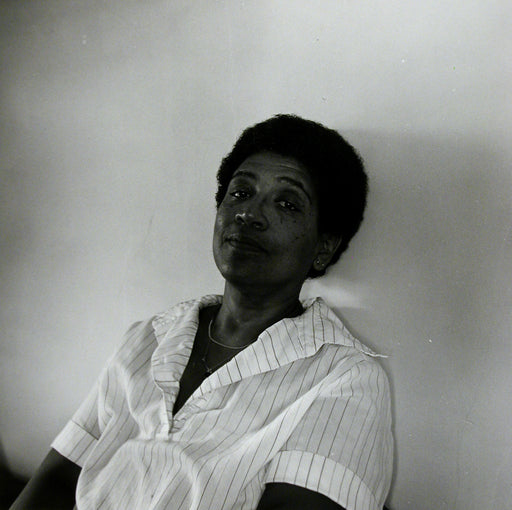
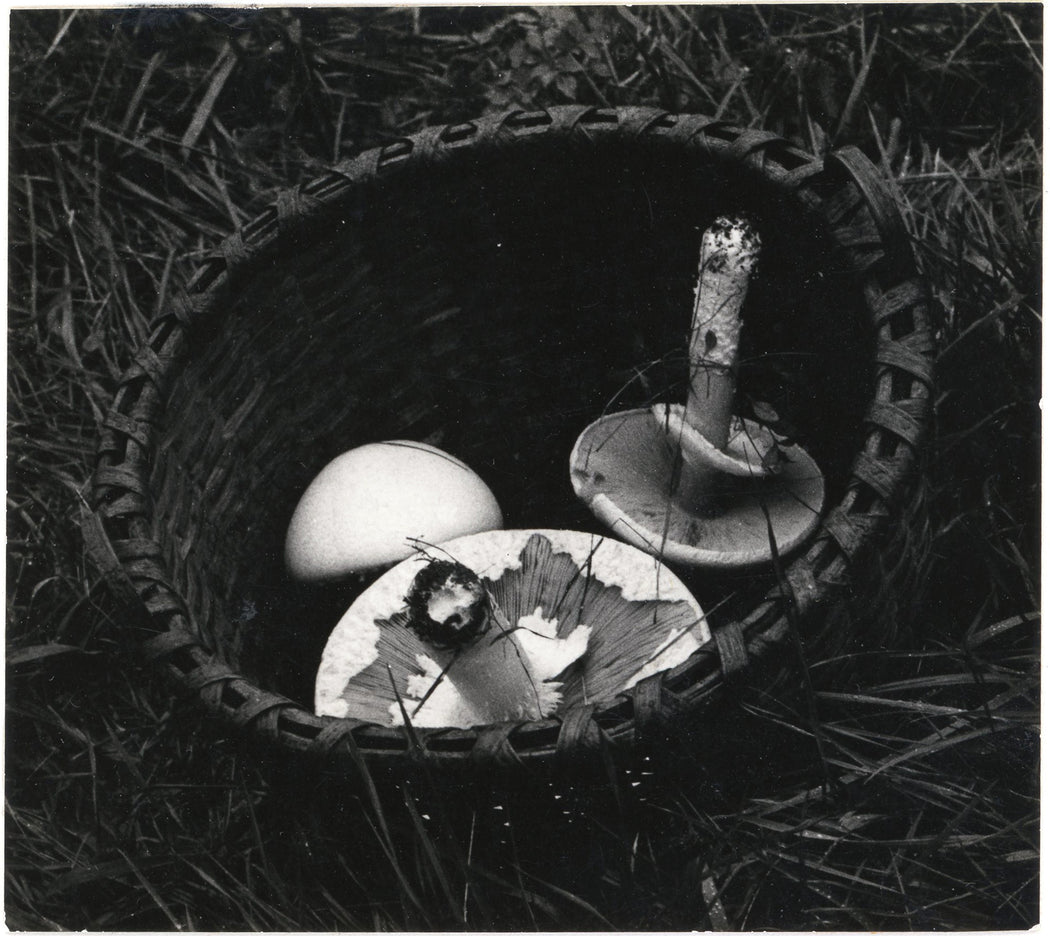
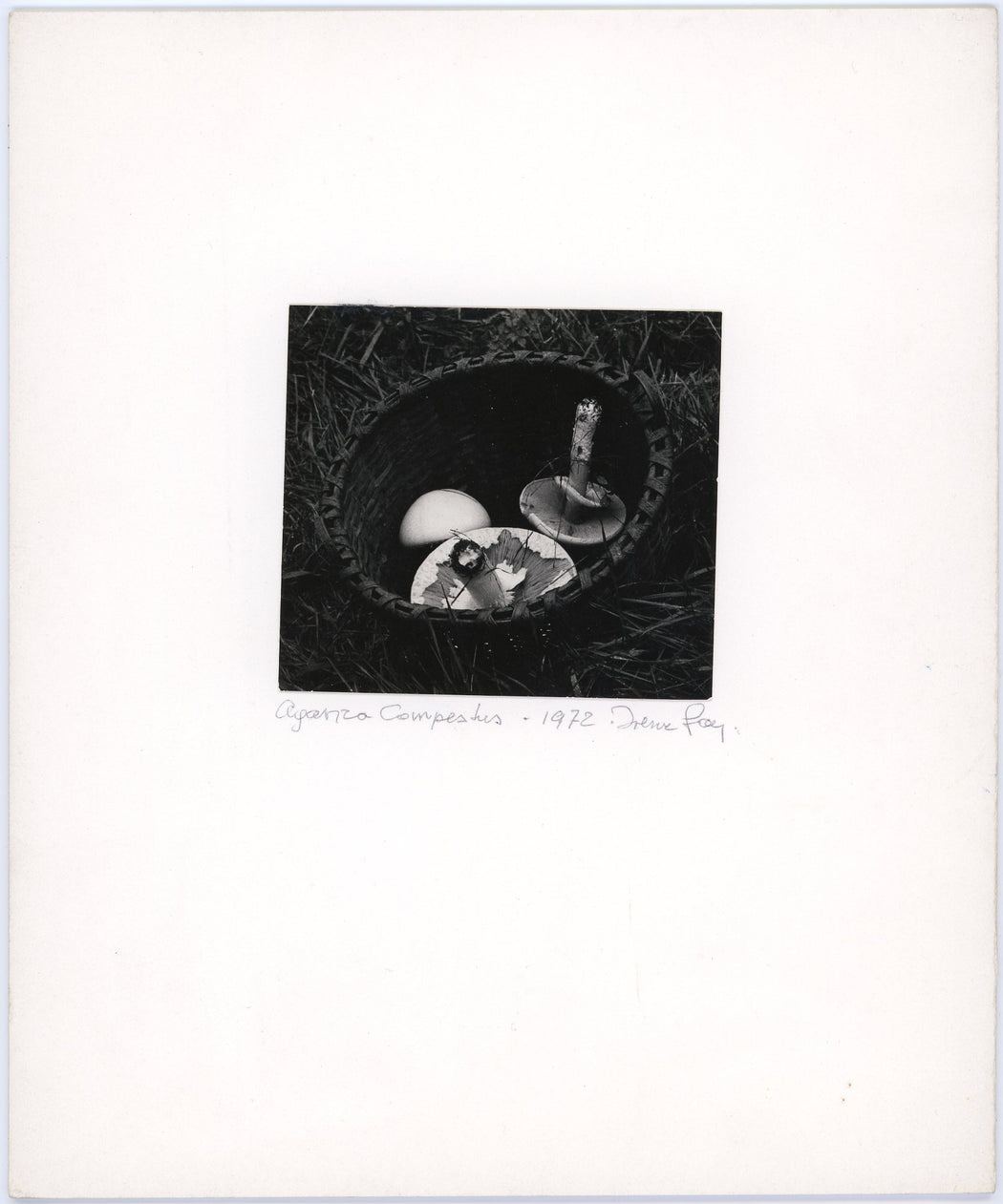
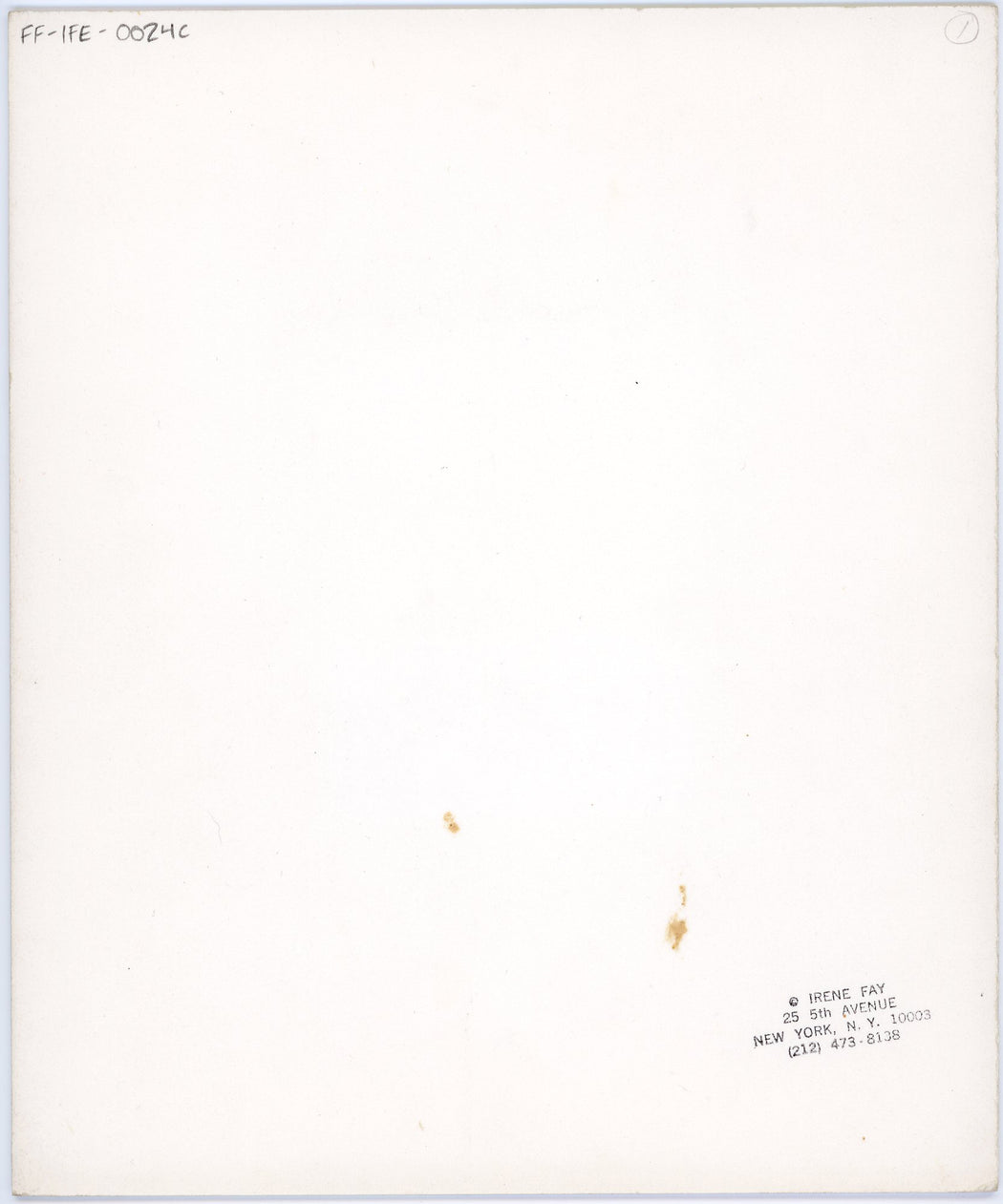
Irene Fay
Agaricus Campestris by Irene Fay
 Toronto, ON)
Toronto, ON)
Learn about our Shipping & Returns policy.
Have a question? Read our FAQ.
- Artwork Info
- About the Artist
-
1972
Gelatin silver print
Signed, titled, and dated, in pencil, au recto
Irene Fay copyright stamp, au verso
Unframed, mounted to mat boardAdditional condition reporting available upon request
-
Irene Fay: The Diamonds are in the Enlarger
In her lifetime, photographer Irene Fay (1914-1986) survived some of the most convulsive events in recent European history. Just before she died, she wrote letters to her children and grandchildren. One of the handwritten messages left in her art studio read, “The diamonds are in the enlarger.” This was a clue for the family inheritance: literally inside Irene’s photo enlarger were the diamonds she and her husband had smuggled out of Poland in August 1939.
These gems are not the only treasure to be found in Irene’s enlarger. Irene’s artwork is informed by her traumatic experiences, her personal relationships to her subject matter, and her highly refined darkroom skills. One of the recurrent themes of Irene’s life was escape, and in her artwork, there is an ever-present search for refuge. Irene wrote of her photography, “Perhaps it is my dream to possess a perfectly arranged miniature world of my own, always at my command.”
Irene was born in Moscow in 1914 on the eve of the First World War. In 1917, the Bolsheviks imprisoned her father because he was a factory owner, a capitalist, and a Jew. At three-years-old, Irene, her mother, and infant brother had to escape for their lives. They traveled to the Crimea, hiding at the bottom of a horse drawn cart, under the hay. The family was reunited in Chemnitz, Germany, where Irene grew up and finished high school in 1933 just after Hitler became Chancellor.
In 1934, Irene began her studies in art at the University of Dresden. Germany, which in 1919 had appeared to offer relative safety and stability, had now become a deadly threat to Jews in the 30s. Nazism was on the rise, and she found many of her fellow students wearing SS uniforms to class. She refused to continue her studies there and left for Switzerland to study interior design at the Academy of Fine Arts in Zurich. There she met Stefan Feigenbaum, a Polish engineering student. They fell in love and got married.
In 1937, Irene and Stefan moved to Warsaw where he joined his father Julius, founder and director of Syrena Records, the largest recording studio in Eastern Europe at the time. In Warsaw, Irene began exploring photography more deeply. From 1937-1939, Irene worked for the Polish Repertory Theater, which commissioned portraits of the leading actors of the day and installed a permanent exhibition of the work. She also created many privately commissioned portraits during this time, including a portrait of the famous comedian of the era, Dymsza.
The 1930s became increasingly dangerous for Jews in Poland; Irene and her husband knew they had to escape. In August of 1939, just days before the Nazis entered Poland, they obtained visas for a trip to Switzerland, packing only evening clothes, pretending to be going on a short business trip. In her essay “The Years with Gotthard Schuh” Irene wrote, "We arrived in Zurich with two small suitcases containing a ball-gown, tuxedo, some toilet articles, a long fur cape, and my jewelry (all of it).” They managed to convince officials they had been invited to a gala convention and their trip would last only several days. She had sewn diamonds into the hem of her dress. The gems remained hidden until her death in 1986. Irene never returned to Poland.
For the remainder of the war, Irene and Stefan lived in Switzerland. On her first day in Zurich, Irene answered a newspaper advertisement looking for a darkroom assistant and got the job. For the next three years, she worked with Switzerland's premier photojournalist, Gotthard Schuh, learning aesthetics and darkroom techniques. During this time, she also began an apprenticeship with notable Swiss photographer Hans Finsler with whom she learned the science and art of photographic chemistry. Her husband Stefan forged passports to help other Jews escape from Europe. In June of 1945, Irene gave birth to their first child, Janine.
By the end of the Second World War, Irene was working in Zurich as an independent portrait photographer. Her subjects included prominent artists and writers of the time, such as Friedrich Dürrenmatt, one of the leading German-language dramatists of his generation, the sculptor Herman Haller, and Felix Salten, the author of Bambi.
Although Irene wanted to move to Israel, in 1948, she and her family emigrated to the United States. They changed their name from Feigenbaum to Fay in preparation for the move to the new world. Irene gave birth to her and Stefan’s second child, Ann, in 1951. After becoming a citizen in 1954, she worked as a freelance photographer, focusing on portraits to help support her growing family. From 1937 to 1984, Irene created an estimated 3,000 privately commissioned studio portraits, with half of these coming from her New York City studio. In 1973 she joined Witkin Gallery, the first successful commercial photography gallery in New York City. Lee Witkin represented Irene for the next ten years. Marge Neikrug represented her until Irene's death in 1986.
As a member of the famed New York Camera Club, Irene met and became friends with neighbors André Kertész, Lisette Model, Evelyn Hofer, and Diane Arbus. In an inscription in her self-titled book, Lisette Model wrote “ to Irene Fay, one of my favorite photographers”.
It was during her years in the United States that Irene created the photographs for which she is most known – clothing draped on chairs and eerie clotheslines, mysterious exteriors, mannequins, and still life images that study the effects of light and shadow.
Fluent in five languages, Irene raised two children in the United States. She managed a marriage, her household, and a professional photography studio. She spent all of her free time photographing the people, places, and things that surrounded her, creating a body of autobiographical work that became a universe of her own. She was a master in the darkroom, using her skills to transform her images into mysterious photographic objects for the eye.
Irene’s work has been featured in several group and solo exhibitions at notable institutions such as the Smithsonian Institution, Jersey City Museum, Hunt Institute for Botanical Documentation, Witkin Gallery, Neikrug Gallery, Stephen Bulger Gallery, and Barry Singer Gallery. She has had her work exhibited alongside notable artists such as Ansel Adams, Berenice Abbott, Lee Friedlander, Paul Strand, and Edward Weston. Irene is also the author of the 1985 book “Daybook From a Kitchen Drawer,” which includes her photographs composed together with recipes and menus she developed. Irene’s work is currently housed in the permanent collections of the Schlesinger Library at the Radcliffe Institute, the Fenimore Art Museum, and the New Jersey City University. A selection of her work is available to purchase, exclusively at FFOTO.



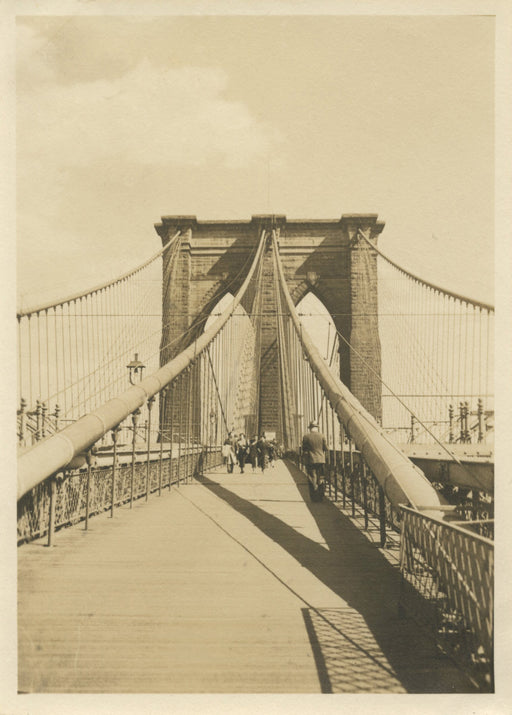
![Untitled [Two women at midway]](http://ffoto.com/cdn/shop/products/Freedman_Untitled_Twowomenatmidway__circa1972_512x.jpg?v=1647967873)
